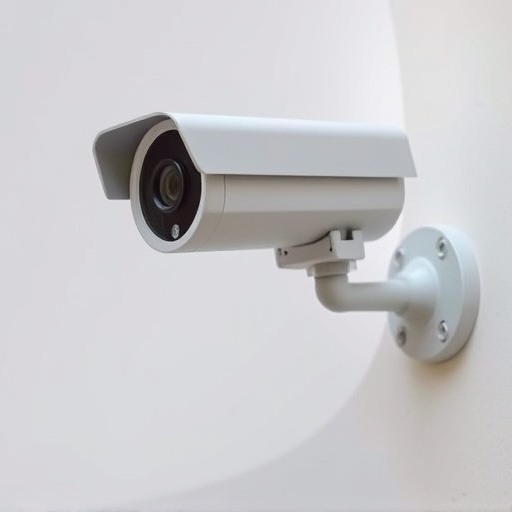Dummy security dome cameras with strategically placed red lights act as powerful visual deterrents for homes and businesses. These devices mimic real surveillance equipment, appearing active in low-light conditions. Key features include durable materials, integration with existing systems, local or cloud storage, and specific red light placement for realism. Optimal positioning places the light above or below the camera center, while technical features like LED glow, resolution, motion detection, and weatherproofing enhance surveillance capabilities. Regular maintenance, including correct installation, cleaning, and battery checks, ensures optimal performance. Proper dummy camera red light placement is crucial for effective deterrence.
“Unraveling the secrets of dummy security dome cameras, this comprehensive guide is your go-to resource. These innovative devices play a pivotal role in enhancing home and business security without the need for intricate wiring or complex setup.
We’ll explore their basic features, shedding light on how they differ from real cameras. The article delves into crucial aspects like choosing the right dummy camera red light placement, essential technical specifications to consider, and practical installation tips for optimal performance.”
- Understanding Dummy Security Dome Cameras: Their Role and Basic Features
- Key Considerations in Choosing Dummy Camera Red Light Placement
- Technical Specifications to Look Out For in Dummy Dome Cameras
- Installation and Maintenance Tips for Optimal Performance of Dummy Security Cameras
Understanding Dummy Security Dome Cameras: Their Role and Basic Features
Dummy security dome cameras play a crucial role in enhancing home and business security, offering a visual deterrent to potential intruders. These devices mimic the appearance of real surveillance cameras, strategically placed to deter crime and create a sense of safety. One distinct feature is their red light placement, designed to be visible even in low-light conditions, ensuring 24/7 awareness.
Basic components include a housing that resembles a traditional dome camera, often made from durable materials like metal or high-impact plastic. Inside, an artificial light source emits a bright red glow, simulating the infrared illumination of real security cameras. These devices typically connect to existing security systems or stand alone with recorded footage stored locally or sent to a cloud server for remote access and monitoring.
Key Considerations in Choosing Dummy Camera Red Light Placement
When selecting a dummy security dome camera, one crucial aspect to consider is the red light placement. This feature plays a significant role in enhancing the camera’s realism and deterring potential thieves or vandals. The strategic positioning of the red light can greatly impact the overall effectiveness of the dummy camera as a deterrent. Ideally, the red light should be clearly visible, simulating the presence of an active surveillance system.
For optimal results, the red light should be placed in a way that draws attention to the camera’s lens or sensor area. This could mean positioning it directly above or below the camera’s center, ensuring it lights up the crucial monitoring points. Additionally, considering the lighting conditions and ambient darkness is essential; the red light should stand out but not be so bright as to attract unwanted attention or cause distraction.
Technical Specifications to Look Out For in Dummy Dome Cameras
When considering a dummy security dome camera, paying attention to its technical specifications is crucial. One key aspect to look out for is the dummy camera red light placement. These LEDs are designed to mimic the glow of a real camera, deterring potential intruders. The ideal position ensures a visible yet non-intrusive presence, often placed at the top center or slightly elevated to replicate the standard mounting of security cameras.
Additionally, check for resolution and image quality. High-definition footage offers clearer details, enhancing surveillance capabilities. Modern dummy cameras often support 1080p or even higher resolutions, providing sharp images both day and night. Other considerations include motion detection sensitivity, night vision capabilities (typically IR LEDs), and weatherproofing to ensure durability in various environments.
Installation and Maintenance Tips for Optimal Performance of Dummy Security Cameras
Optimal performance from your dummy security cameras heavily relies on correct installation and regular maintenance. During setup, strategically place the red light indicators to mimic real camera activity—this simple step can deter potential intruders effectively. Ensure each camera is securely mounted in a fixed position, aligning with areas requiring surveillance. Use sturdy mounts that withstand environmental conditions, preventing damage from wind or weather.
Regular cleaning and inspection are crucial for sustained functionality. Dust and debris can accumulate on the camera lens, impacting image quality. Periodically wipe down the cameras with a microfiber cloth to keep them clear. Check connections regularly; loose cables might affect power supply and signal transmission. Battery-powered models require specific attention—schedule replacements or charging cycles as needed to avoid unexpected failures.
When considering dummy security dome cameras, understanding their specifications, especially the strategic placement of red lights, is key. This guide has highlighted the essential features and technical aspects to look for, ensuring you select a camera that effectively simulates genuine surveillance. Remember, proper installation and regular maintenance are vital for optimal performance, so be sure to follow the provided tips. With these insights, you’re equipped to make an informed decision, enhancing your security measures with realistic yet functional dummy cameras.
